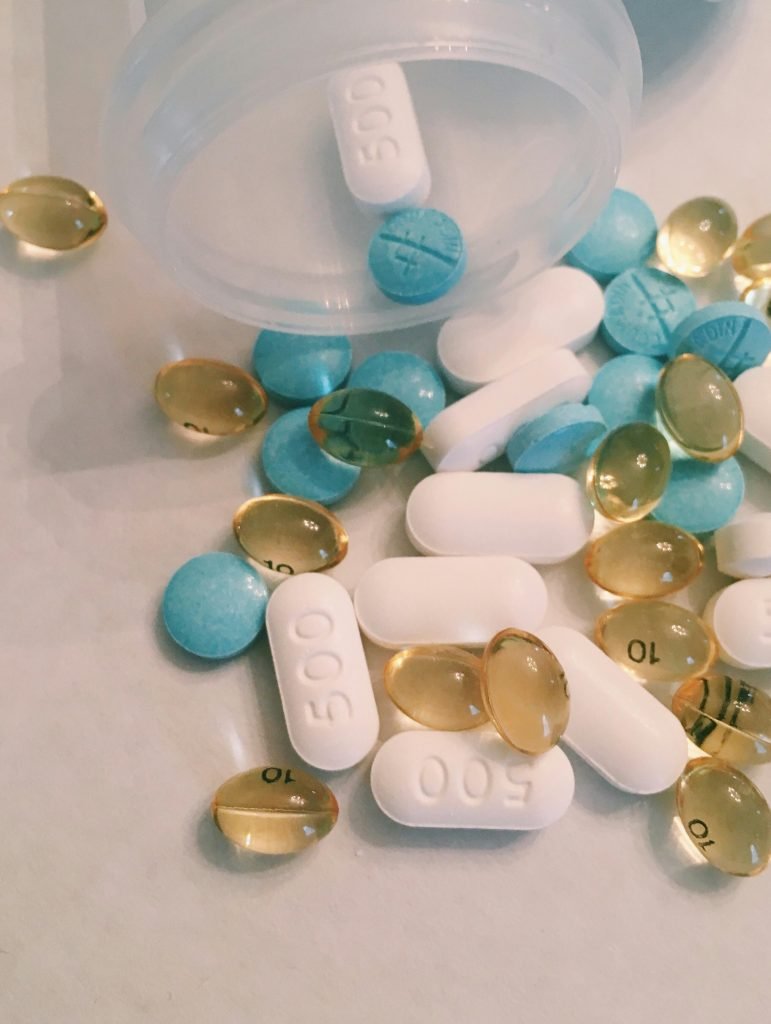If you’re looking for cost-effective options when it comes to your medications, you’re in luck! This article explores a range of wallet-friendly alternatives to brand-name medications. From generic counterparts to over-the-counter options, we’ve got you covered. Say goodbye to high expenses and hello to affordable solutions that won’t compromise your health. Let’s dive into the world of affordable alternatives and unlock the secrets to saving money on medication.
Generic Medications
Definition of generic medications
Generic medications are pharmaceutical drugs that are equivalent to brand-name medications in terms of dosage, strength, route of administration, safety, efficacy, and intended use. These medications are produced after the patent for the brand-name drug has expired, allowing multiple manufacturers to produce and release their versions of the medication. Generic medications contain the same active ingredients as their brand-name counterparts, but they may differ in inactive ingredients such as fillers or dyes.
Similarities and differences with brand-name medications
Generic medications are essentially the same as brand-name medications in terms of their active ingredients and therapeutic effects. They undergo rigorous testing conducted by regulatory authorities to ensure their safety and efficacy. The primary difference lies in their cost, packaging, and appearance. Generic medications are significantly more affordable than brand-name medications because they do not require extensive research and development or marketing costs. However, it is important to note that generics are required to meet strict quality standards set by regulatory authorities, ensuring they are safe and effective alternatives to brand-name drugs.
Cost savings of generic medications
One of the key advantages of choosing generic medications is the substantial cost savings they offer. Generic drugs are often priced significantly lower than their brand-name counterparts, sometimes as much as 80-85% cheaper. This allows individuals to access the medications they need at a fraction of the cost, making healthcare more affordable and accessible. The availability of generic medications also promotes competition, which further drives down prices. Choosing generic drugs can result in substantial cost savings for both individuals and healthcare systems, making them an attractive option for those seeking affordable alternatives to brand-name medications.
Over-the-Counter (OTC) Medications
Availability of OTC medications
Over-the-counter (OTC) medications are drugs that can be purchased directly from a pharmacy or retail store without a prescription. They are readily available to individuals for self-administration. OTC medications encompass a wide range of products, including pain relievers, cough and cold medicines, allergy medications, and antacids, among others. These medications are typically located in easily accessible sections of pharmacies and can be purchased without the need for a doctor’s visit.
Types of conditions treated by OTC medications
OTC medications are commonly used to relieve symptoms of mild to moderate health conditions. They are suitable for self-management of conditions such as headaches, minor pain, coughs, colds, allergies, indigestion, and heartburn. OTC medications are also available for treating skin conditions such as acne and itchiness, as well as for preventive care, including vitamins and dietary supplements. These medications offer a convenient and cost-effective option for individuals to address common health concerns without the need for a prescription.
Cost-effectiveness of OTC medications
The cost-effectiveness of OTC medications makes them an appealing choice for individuals seeking affordable alternatives to brand-name drugs. OTC medications are generally priced lower than prescription medications, allowing individuals to save money on healthcare expenses. Moreover, OTC medications reduce the need for doctor visits and associated service costs, saving individuals time and money. By offering accessible and affordable treatment options for common health conditions, OTC medications contribute to cost savings and improve overall healthcare affordability.

This image is property of images.unsplash.com.
Prescription Assistance Programs
Purpose of prescription assistance programs
Prescription assistance programs are initiatives designed to help individuals who are uninsured, underinsured, or facing financial hardship to access necessary prescription medications at reduced or no cost. These programs aim to bridge the affordability gap and ensure that individuals in need can obtain the medications prescribed by their healthcare providers. Prescription assistance programs are often sponsored by pharmaceutical companies, non-profit organizations, and government agencies, all working together to provide assistance and support to those with limited financial resources.
Eligibility criteria for prescription assistance programs
Eligibility criteria for prescription assistance programs may vary depending on the specific program, but generally, they target individuals who do not have adequate insurance coverage for medications or have limited financial resources. Common eligibility criteria include income limitations, lack of insurance coverage, residency requirements, and specific medical conditions. It is essential to review the eligibility requirements of each program to determine whether you qualify for assistance.
How to apply for prescription assistance programs
To apply for prescription assistance programs, individuals typically need to complete an application form provided by the program. The application form may require personal information, details about income and financial resources, and information about the prescribed medication. Some programs may also require supporting documents, such as proof of income, residency, or medical condition. It is crucial to carefully follow the instructions provided by the program and submit all required documents accurately. Once the application is submitted, it goes through a verification process, and if approved, the individual can access the prescribed medications at reduced or no cost.
Patient Assistance Programs
Overview of patient assistance programs
Patient assistance programs are similar to prescription assistance programs in that they aim to provide support and access to medications for individuals who cannot afford them. These programs are typically sponsored by pharmaceutical companies and offer free or low-cost medications to eligible individuals. Patient assistance programs are specifically designed to assist individuals who are uninsured, underinsured, or facing financial hardship, ensuring that they can obtain the prescribed medications they need to manage their health conditions effectively.
Eligibility requirements for patient assistance programs
Eligibility requirements for patient assistance programs may vary depending on the sponsoring pharmaceutical company. However, as with prescription assistance programs, patient assistance programs generally target individuals who cannot afford their prescribed medications due to limited financial resources or lack of insurance coverage. Eligibility may be based on income limitations, lack of insurance, specific medical conditions, and residency requirements. It is essential to review the eligibility criteria provided by each program to determine if you meet the requirements for enrollment.
How to enroll in patient assistance programs
To enroll in patient assistance programs, individuals need to complete an application form provided by the sponsoring pharmaceutical company. The application form typically requires personal information, details about income and financial resources, medical information, and information about the prescribed medication. Supporting documents may also be required to verify eligibility, such as proof of income, residency, or medical condition. Following the submission of a complete and accurate application, the company reviews the application and, if approved, provides access to the prescribed medications at no cost or a reduced price.

This image is property of images.unsplash.com.
Pharmacy Discount Cards
Definition and benefits of pharmacy discount cards
Pharmacy discount cards are membership cards that provide discounts on prescription medications, over-the-counter medications, and other healthcare products and services. These cards are typically available for free or at a low cost and can be used at participating pharmacies to obtain discounts on a wide range of medications. The primary benefit of pharmacy discount cards is the potential for significant cost savings on prescription medications, making them a valuable tool for individuals seeking affordable alternatives to brand-name drugs.
Finding and using pharmacy discount cards
Pharmacy discount cards can be found through various sources, including healthcare organizations, non-profit organizations, government agencies, and pharmaceutical companies. Many websites and mobile applications also offer access to pharmacy discount cards. To use a pharmacy discount card, individuals present the card to the pharmacist when filling a prescription or purchasing an eligible over-the-counter product. The discount is then applied at the point of sale, reducing the out-of-pocket cost for the individual.
Cost savings with pharmacy discount cards
Pharmacy discount cards offer significant cost savings by reducing the price individuals pay for medications. The discounts provided by these cards can range from a few dollars to substantial savings, particularly for high-cost medications. By utilizing a pharmacy discount card, individuals can reduce their overall medication expenses, making healthcare more affordable and accessible. It is important to note that pharmacy discount cards cannot be combined with insurance coverage, but they can be used for medications that are not covered by insurance, or when the card discount is greater than the insurance copay.
Mail-Order Pharmacies
Introduction to mail-order pharmacies
Mail-order pharmacies, also known as online pharmacies or home delivery pharmacies, enable individuals to order prescription medications and have them delivered directly to their homes. These pharmacies operate through websites or mobile applications, providing a convenient and accessible way for individuals to access their medications without visiting a physical pharmacy location. Mail-order pharmacies typically offer competitive pricing and can provide cost savings, especially for long-term medication needs.
Advantages of using mail-order pharmacies
Using mail-order pharmacies offers several advantages to individuals seeking affordable alternatives to brand-name medications. Firstly, mail-order pharmacies often provide discounted prices on medications, allowing individuals to save money compared to purchasing medications from traditional brick-and-mortar pharmacies. Secondly, mail-order pharmacies offer the convenience of home delivery, eliminating the need to travel to a pharmacy to obtain medications. This is particularly beneficial for individuals with mobility limitations or those living in remote areas. Lastly, mail-order pharmacies often provide automatic refills and reminders, ensuring individuals receive their medications in a timely manner, reducing the risk of medication non-adherence.
How to order medication through mail-order pharmacies
Ordering medications through mail-order pharmacies is a straightforward process. Individuals can typically create an account on the pharmacy’s website or mobile application, providing their personal information and prescription details. The pharmacy may require a valid prescription from a healthcare provider, which can be submitted electronically or by mail. Once the account is set up and the prescription is verified, individuals can browse the online catalog, select the medications they need, and proceed to checkout. Payments can be made securely online, and the medications will be shipped to the individual’s designated address, usually within a specified timeframe.

This image is property of images.unsplash.com.
Switching to a Different Brand
Reasons for switching brands
Switching brands of medications may be necessary for various reasons. One common reason is the availability of generic alternatives to brand-name medications. As discussed earlier, generics offer the same therapeutic benefits at a significantly lower cost. Switching to a generic version of a medication can help individuals save money without compromising the effectiveness of their treatment. Additionally, some individuals may switch brands due to insurance coverage changes, formulary restrictions, or personal preference. It is important to consult with a healthcare professional before switching brands to ensure the new medication is suitable and safe for the individual’s specific needs.
Consultation with healthcare professionals
When considering switching brands of medications, it is essential to consult with a healthcare professional, such as a physician or pharmacist. Healthcare professionals can provide valuable insights and guidance based on the individual’s medical history, current condition, and specific drug requirements. They can assess whether switching brands is appropriate and safe, and provide recommendations on alternative options. The healthcare professional can also inform individuals about potential differences between the brand-name medication and the generic or different brand, ensuring they fully understand any changes in the medication they will be taking.
Potential cost savings when switching brands
Switching brands of medications, particularly to generic versions, can lead to substantial cost savings. Generic medications are generally priced significantly lower than brand-name medications, allowing individuals to reduce their medication expenses while receiving the same therapeutic benefits. Cost savings can be especially significant for individuals who rely on long-term medication management. By exploring and considering generic alternatives or different brand options, individuals can harness the potential for cost savings without compromising their healthcare needs.
Therapeutic Substitutions
Understanding therapeutic substitutions
Therapeutic substitutions occur when a healthcare professional substitutes one medication with another medication that has a similar therapeutic effect. These substitutions typically involve switching from a brand-name medication to a generic or different brand medication that contains the same active ingredients and provides equivalent therapeutic benefits. Therapeutic substitutions are guided by the principle of bioequivalence, ensuring that the medication’s safety, quality, and efficacy are equivalent to the originally prescribed medication.
Factors to consider before accepting therapeutic substitutions
Before accepting a therapeutic substitution, it is important to consider various factors. Firstly, consult with a healthcare professional to ensure the substituted medication is appropriate for your specific needs and medical condition. Assess any potential differences in dosage, administration instructions, or side effects between the original and substituted medication. Additionally, consider any cost implications, as therapeutic substitutions may offer cost savings compared to brand-name medications. It is crucial to be proactive in communicating with healthcare professionals and asking questions to ensure you are comfortable with and fully understand the implications of therapeutic substitutions.
Cost benefits of therapeutic substitutions
Therapeutic substitutions offer notable cost benefits, primarily due to the price difference between brand-name medications and their generic or different brand counterparts. When a healthcare professional recommends a therapeutic substitution, it is typically because the substituted medication is proven to be bioequivalent to the original medication, providing the same therapeutic benefits at a lower cost. These cost savings can add up significantly over time, making therapeutic substitutions an attractive option for individuals seeking affordable alternatives to brand-name medications.
Medical Insurance Coverage
Reviewing medical insurance coverage
Reviewing medical insurance coverage is crucial in understanding the extent of coverage for brand-name and generic medications. Insurance policies differ in their coverage of prescription medications, and it is important to be familiar with the policy’s formulary, which is the list of medications covered by the insurance plan. By reviewing the formulary, individuals can ascertain whether their insurance covers brand-name medications, generic medications, or both. Understanding coverage limitations and copayment requirements helps individuals make informed decisions and optimize their medication expenses.
Generic vs. brand-name coverage
Many medical insurance plans provide coverage for both generic and brand-name medications. However, the coverage may differ in terms of copayment amounts or tiered pricing structures. Generic medications are generally placed in lower cost tiers, leading to lower copayments, while brand-name medications are typically placed in higher cost tiers, resulting in higher copayments. It is essential to review the insurance plan’s coverage and determine the copayment differences between these two options. In some cases, insurance plans may offer coverage only for generic medications, incentivizing individuals to choose these more affordable alternatives.
Taking advantage of insurance coverage to save costs
To take advantage of insurance coverage and save costs, individuals should follow several strategies. Firstly, review the formulary to determine which medications are covered and at what copayment level. Whenever possible, opt for generic medications that offer the same therapeutic benefits at a fraction of the cost. Additionally, explore mail-order pharmacy options that may offer discounted prices on medications covered by insurance. By maximizing insurance coverage and choosing cost-effective alternatives, individuals can significantly reduce their out-of-pocket expenses and make healthcare more affordable.
Home Remedies
Examples of home remedies for common conditions
Home remedies are natural or traditional remedies that can be prepared or used at home to alleviate common health conditions. While they may not replace medical treatments, home remedies can provide relief for minor ailments. Some examples of home remedies include drinking warm ginger tea for stomach upsets, using a cold compress to reduce swelling, gargling with warm salt water for a sore throat, or using honey to soothe a cough. These simple and accessible remedies can complement medical treatments and provide temporary relief for certain conditions.
When to consider utilizing home remedies
Home remedies can be used when individuals experience mild symptoms or discomfort associated with common health conditions. If symptoms are severe or persist for an extended period, it is important to consult with a healthcare professional. However, for minor ailments such as indigestion, headaches, mild coughs, or skin irritation, home remedies can offer temporary relief. It is crucial to ensure that you are familiar with the home remedy and any potential risks or contraindications before utilizing them. If uncertain, consult with a healthcare professional for guidance.
Cost-efficient alternatives to brand-name medications
Home remedies provide cost-efficient alternatives to brand-name medications by utilizing readily available ingredients and natural remedies. Unlike pharmaceutical drugs, which can be expensive, home remedies often involve common ingredients found in the kitchen or pantry. By using these natural remedies, individuals can save money on costly over-the-counter medications or brand-name drugs. However, it is important to note that home remedies may not be suitable for all conditions, and it is crucial to consult with a healthcare professional for advice on appropriate treatment options.


